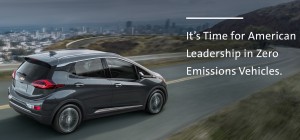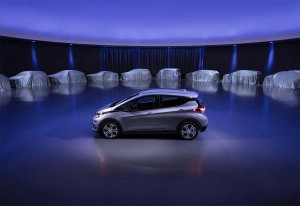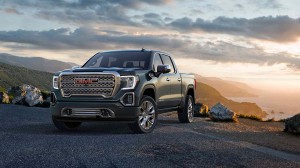
General Motors is breaking from the automotive pack with its call for an national emissions policy similar to California's.
General Motors call to use California’s Zero Emission Standard in all 50 states is setting up a potential conflict with the other carmakers.
GM is asking the Environmental Protection Agency for a new fuel-economy standard that would take the California’s Zero Emission Standard for EVs the rule for all 50 states and steer millions of new consumers into electric vehicles — a position very different that of the Trump administration, which has made no secret of its desire to obliterate the California ZEV mandate.
Meanwhile, the Auto Alliance, in a statement issued the same day as GM’s surprise announcement, praised the Trump administration for offering to modify the fuel economy and greenhouse gas standards.
“The Alliance appreciates NHTSA and EPA issuing a joint Proposed Rule that incorporates the latest data and will consider standards for MYs 2021 to 2026,” the statement began.
(GM shows support of gender equality with board appointment. Click Here for the story.)
“Many of the projections and assumptions upon which MYs 2022-2025 standards were based have proven to be incorrect; the level of technology modeled by the agencies in 2012 is insufficient to meet the standards, and the actual level of technology that industry projects is needed to comply with the standards is misaligned with market realities.”
The language from the Alliance, the industry’s major lobbying group, is strikingly different that GM laid out.
“General Motors will file comments to the Safer Affordable Fuel-Efficient (SAFE) Vehicles Rule for Model Years 2021-2026 Passenger Cars and Light Trucks,” the company said in statement posted on its web site. The would, in effect, increase the size of the EV market in the U.S. exponentially.
In its comments, General Motors proposes the establishment of a National Zero Emissions Vehicle (NZEV) program to support a 50-state solution, promote the success of the U.S. automotive industry and preserve U.S. industrial leadership for years to come,” GM said.
China has already mandated wider use of EVs and in many quarters is considered the world’s leader in EV technology.
GM believes the NZEV program, as recommended, has the potential to place more than 7 million long-range EVs on the road by 2030, yielding a cumulative incremental reduction of 375 million tons of carbon dioxide emissions between 2021 and 2030 compared with the existing ZEV program.
(Click Here for more about GM getting kudos for renewable energy commitments.)
“General Motors has a vision of zero crashes, zero emissions and zero congestion. This is a bold vision and getting there will take bold actions,” GM executive vice president Mark Reuss said.
“We believe in a policy approach that better promotes U.S. innovation and starts a much-needed national discussion on electric vehicle development and deployment in this country. A National Zero Emissions Program will drive the scale and infrastructure investments needed to allow the U.S. to lead the way to a zero emissions future,” he added.
GM said it supports a nationwide program modeled on the existing ZEV program and provides these framework.
The framework supported by GM would include establishing ZEV requirements (by credits) each year, starting at 7% in 2021 and increasing 2% each year to 15% by 2025, then 25% by 2030, meaning one of every four vehicles sold in the U.S. would be an EV.
GM was careful to protect its own interest by calling for the use of a crediting system modeled on the current ZEV program: credits per vehicle, based on EV range, as well as averaging, banking and trading, meaning it could protect its pickup truck franchise.
Requirements after 2025 linked to path toward commercially viable EV battery cell availability at a cost of $70/kWh and adequate EV infrastructure development.
GM also called for the establishment of a Zero Emissions Task Force to promote complementary policies. The program would end when 25% of the target is met or based on a determination that the battery cost or infrastructure targets are not practicable within the timeframe, GM said.
(To see more about GM expanding its electric vehicle team, Click Here.)
Meanwhile, the Alliance said automakers have invested substantially in technologies, so consumers can visit dealerships and select from approximately 500 models that achieve 30 MPG or more (highway), including 45 hybrid-electric and over 50 plug-in electric and hydrogen fuel cell models.




“…EV battery cell availability at a cost of $70/kWh…” What is it now?
Should be in the story: anywhere from just under $140 to around $300.